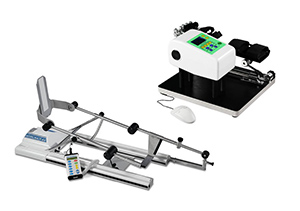
CPM devices today are widely used in physiotherapy treatments.
Reducing the range of motion is one of the most common complications of orthopedic and postoperative diseases, and to prevent rehabilitation,physiotherapy is essential .
The CPM device after surgery, by preventing slow, continuous and involuntary movement in the joints, prevents many of the effects of intubation and increases the range of joint movement.
The most important use and utility of these devices is to maintain and restore the range of joints after surgery or joint injuries.
The CPM is effective in improving the functioning of the joints of the knee, hip, ankle, shoulder, elbow and wrists.
It is possible to restore joint mobility using active and passive movements.
In fact, the main use of this device is when the patient is not able to perform active motions and this modality can be prevented by physiotherapy .
CPM improves local circulation, stimulates the repair of damaged tissues and reduces tissue edema.
CPM plays an important role in preventing joint dryness, tissue adhesions and destruction of articular cartilage.
The use of CPM devices is one of the effective strategies for rehabilitation after surgery, especially the knee joint.
During this method, the joint will be driven in a given direction over a specified period of time by the device.
The CPM device is located close to the damaged joint and adjusts an electrical section of the range and joint velocity to fit the patient's condition.
Using this device, you can expect a range of 3 to 5 degrees per day.
Moving the damaged joint in the correct shape, constant speed, and continuously, at a specified time, are the essential characteristics of a CPM device.
During the treatment, the patient does not perform any movement and all movements are performed by the device.
 English
English فارسی
فارسی